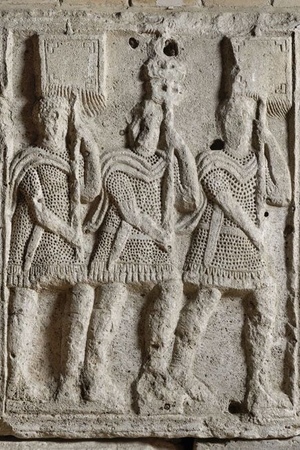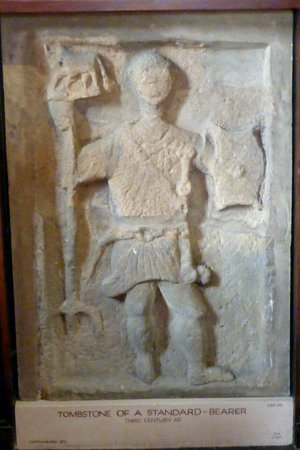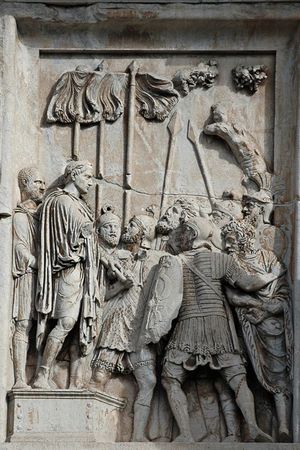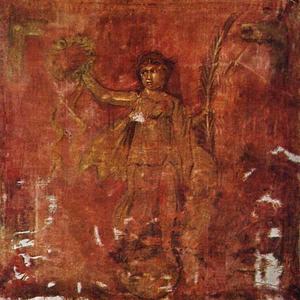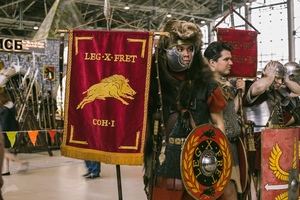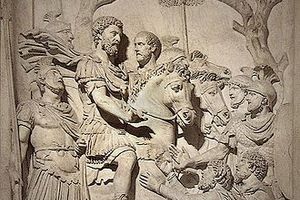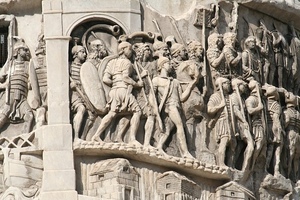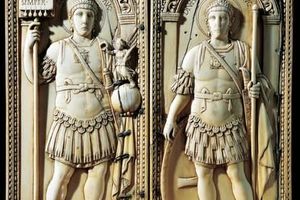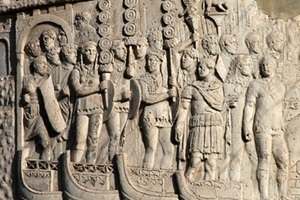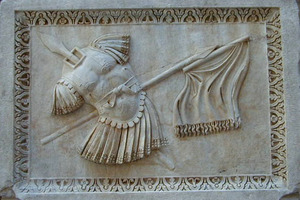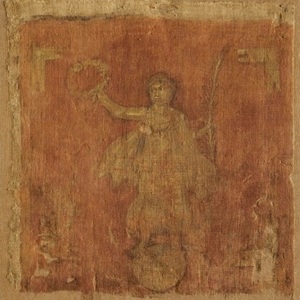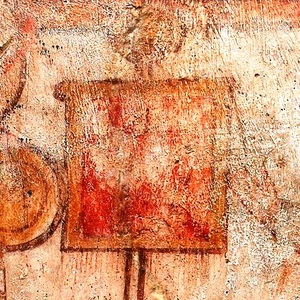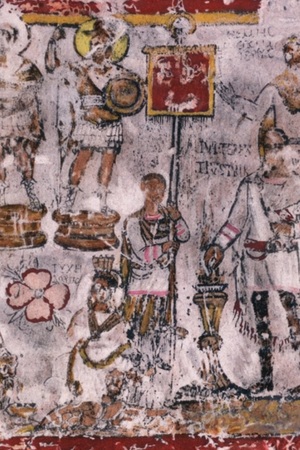Vexillary
Vexillarius (from Latin vexillarius, from vexillum — banner, standard) is the name of a standard-bearer in the Roman army. A vexillarius carried a standard with the emblem and number of the military unit, attached to a transverse bar on a long staff. Vexilla were usually the banners of individual military units, including those operating outside the legion - hence the name of such units - vexillations. Vexilla could also be held by cavalrymen, auxiliaries, and Praetorian cohorts.
The vexillum itself was a rectangular cloth made of wool or linen, often with an angular design. The center of the vexillum depicted the symbol of the legion and/or its initials. It is assumed that the design could be painted or embroidered. Currently, only one surviving vexillum has been found, dated to the 2nd-3rd centuries AD. It depicts the goddess of victory on a sphere - Victoria. Inventory number IG-4242. I.1.a 5800. The banner shows a painted image of the goddess of victory on a sphere. Material - linen. Size - 53 by 51 cm. A rectangular piece of cloth is sewn onto a reed stick. The banner is described as Roman.
An external distinction of the vexillarius was a bear or wolf skin worn over the helmet with the paws tied around the neck. Praetorian vexillarii wore a lion skin. Their armament consisted of a gladius and pugio, as well as a small round shield - a parma, which was worn on a strap at the side. The armor of the vexillarius was a lorica hamata or squamata.
Related topics
Legion Banner Group, Legion, Aquilifer, Signifer, Roman Army helmets, Gladius, Full name, Lorica Hamata, Lorica Squamata, Parma

 Gallery
Gallery






